Seven Deadly Sins
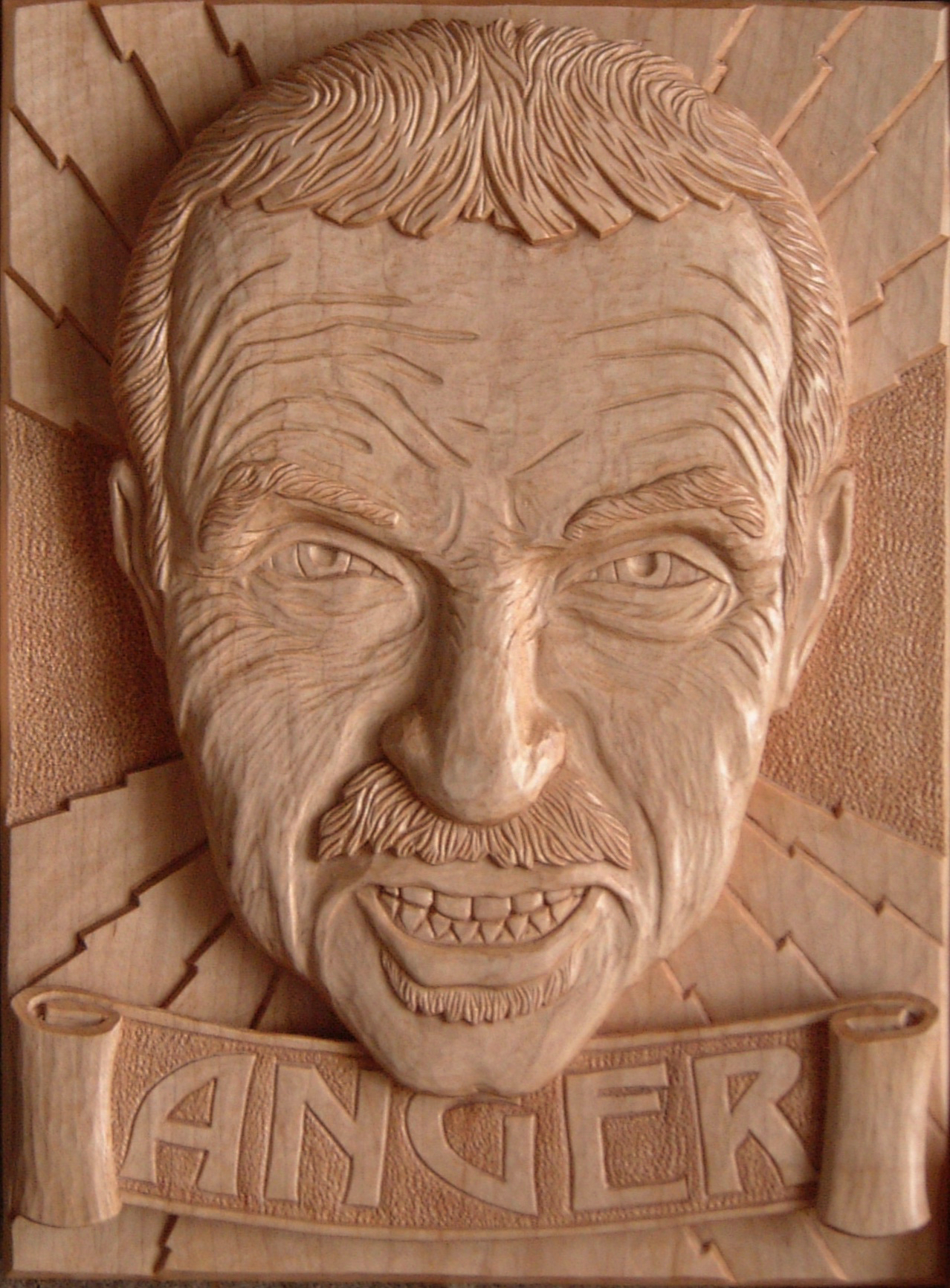
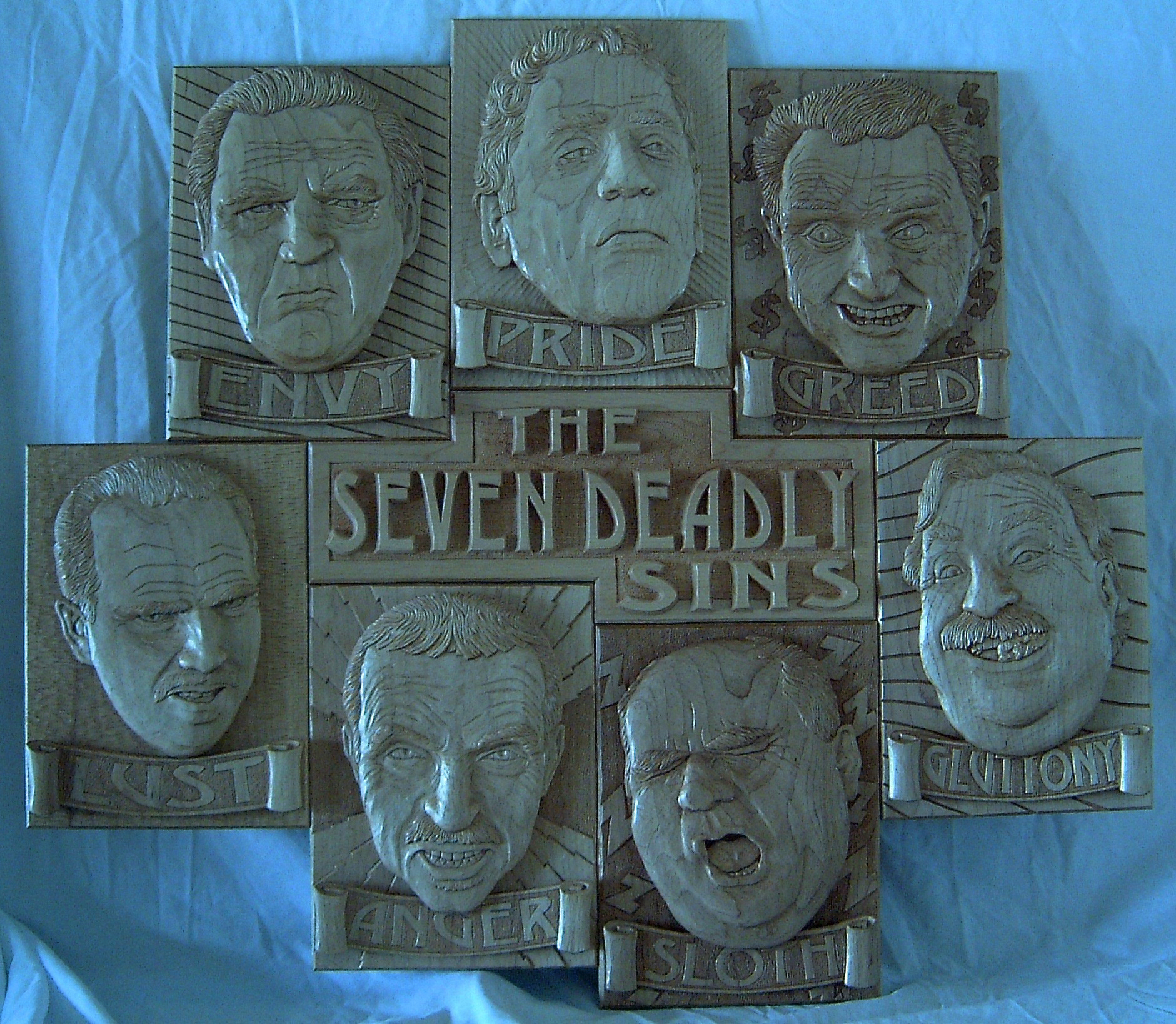
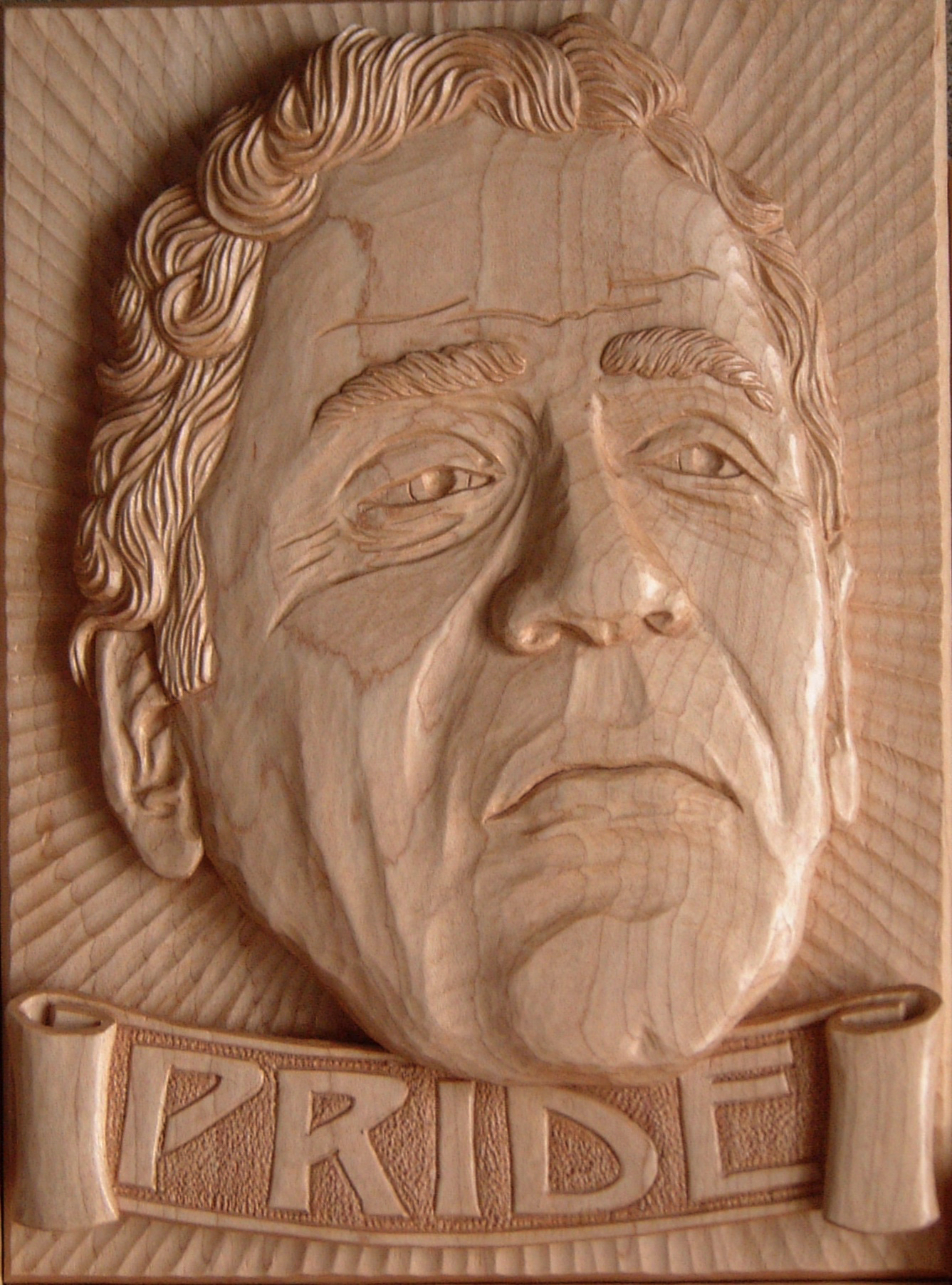
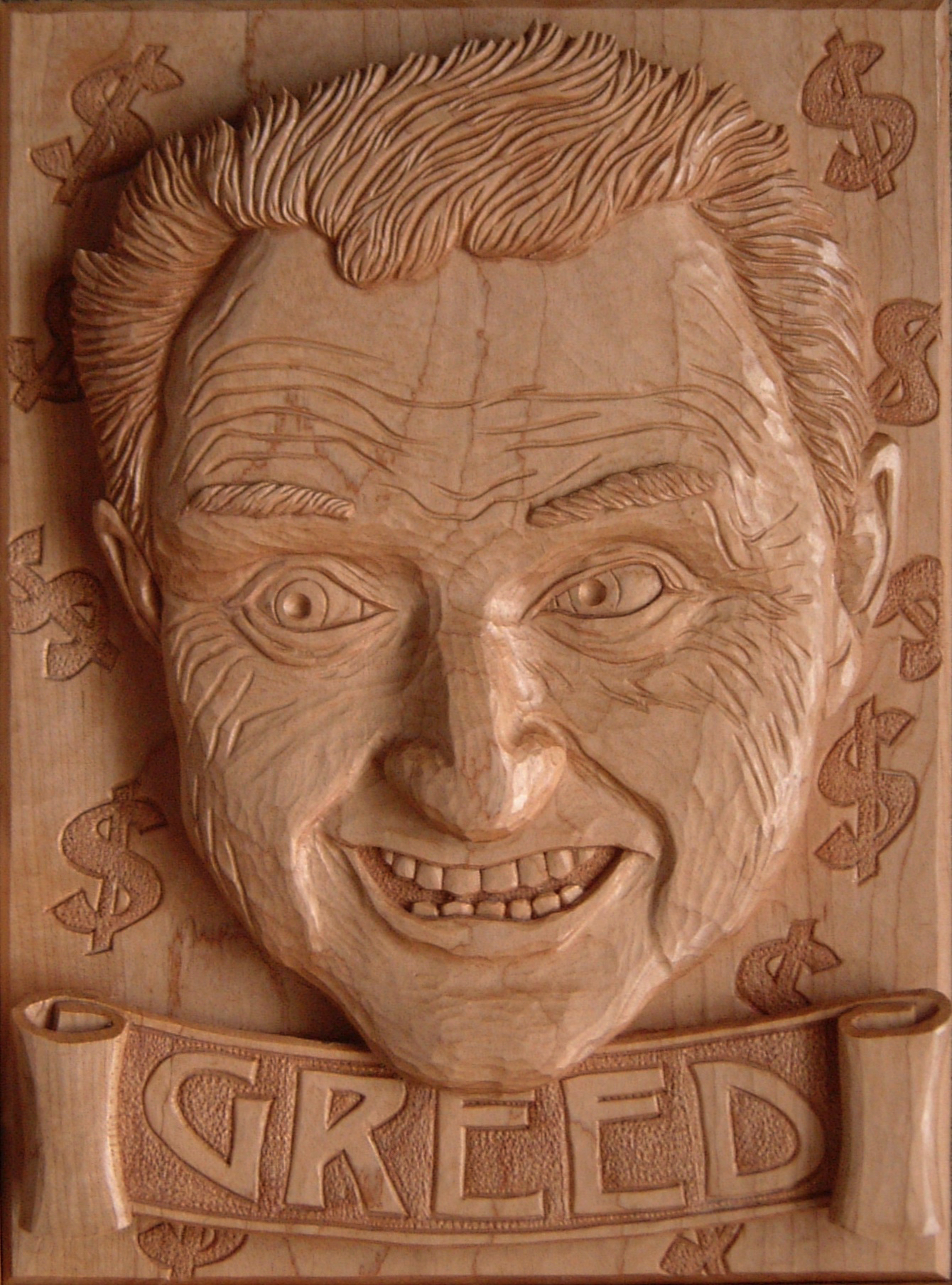
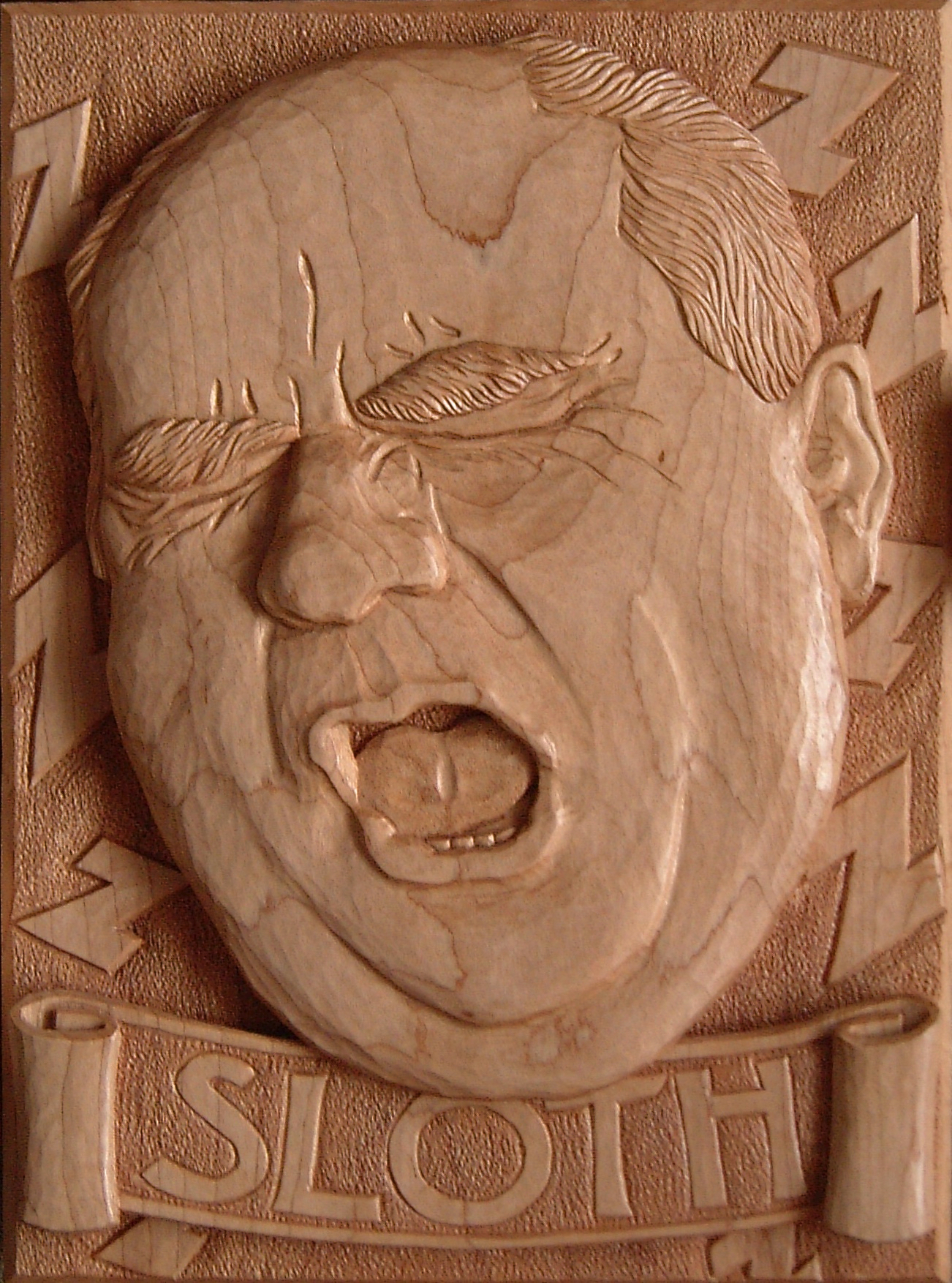
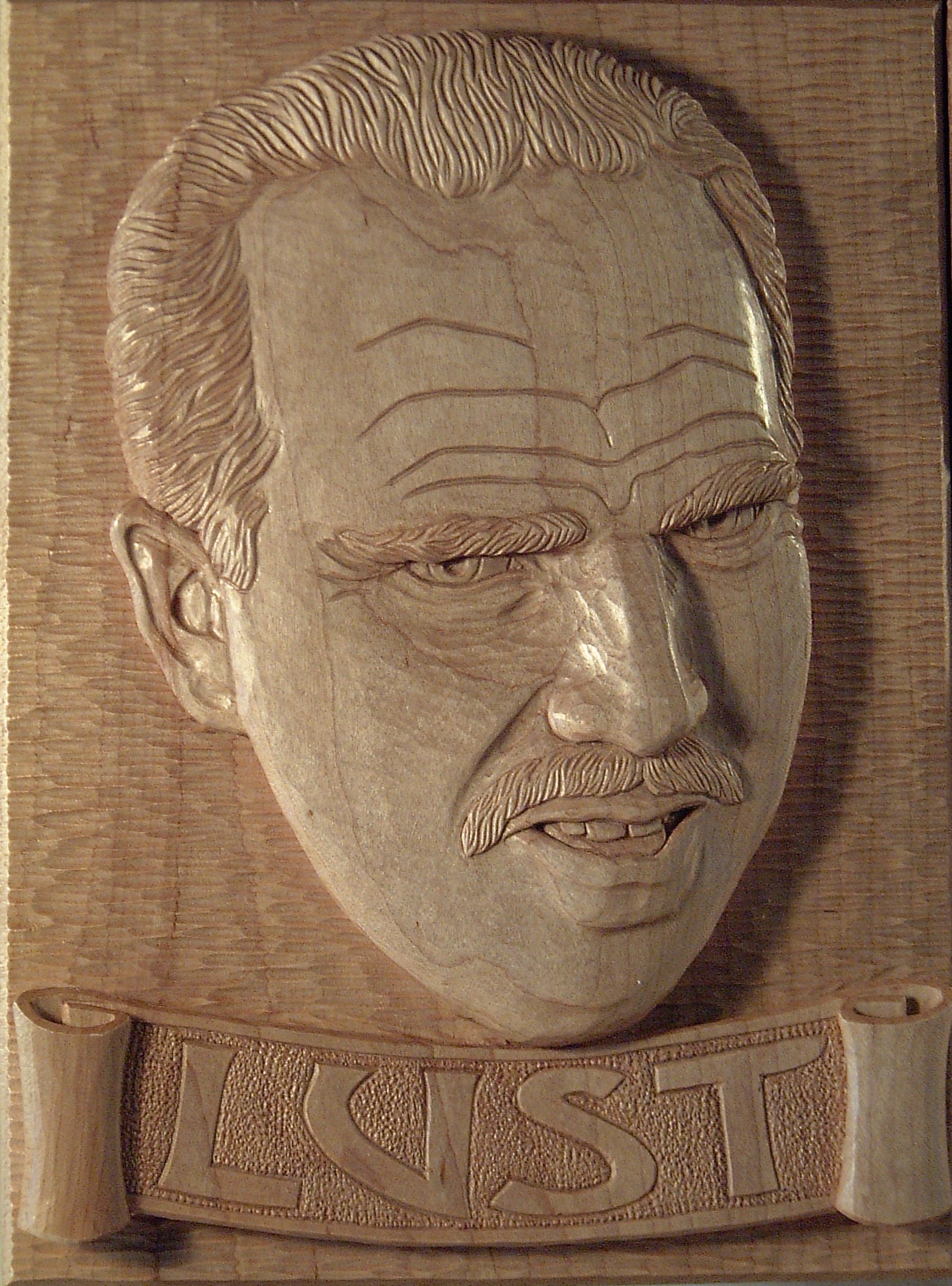
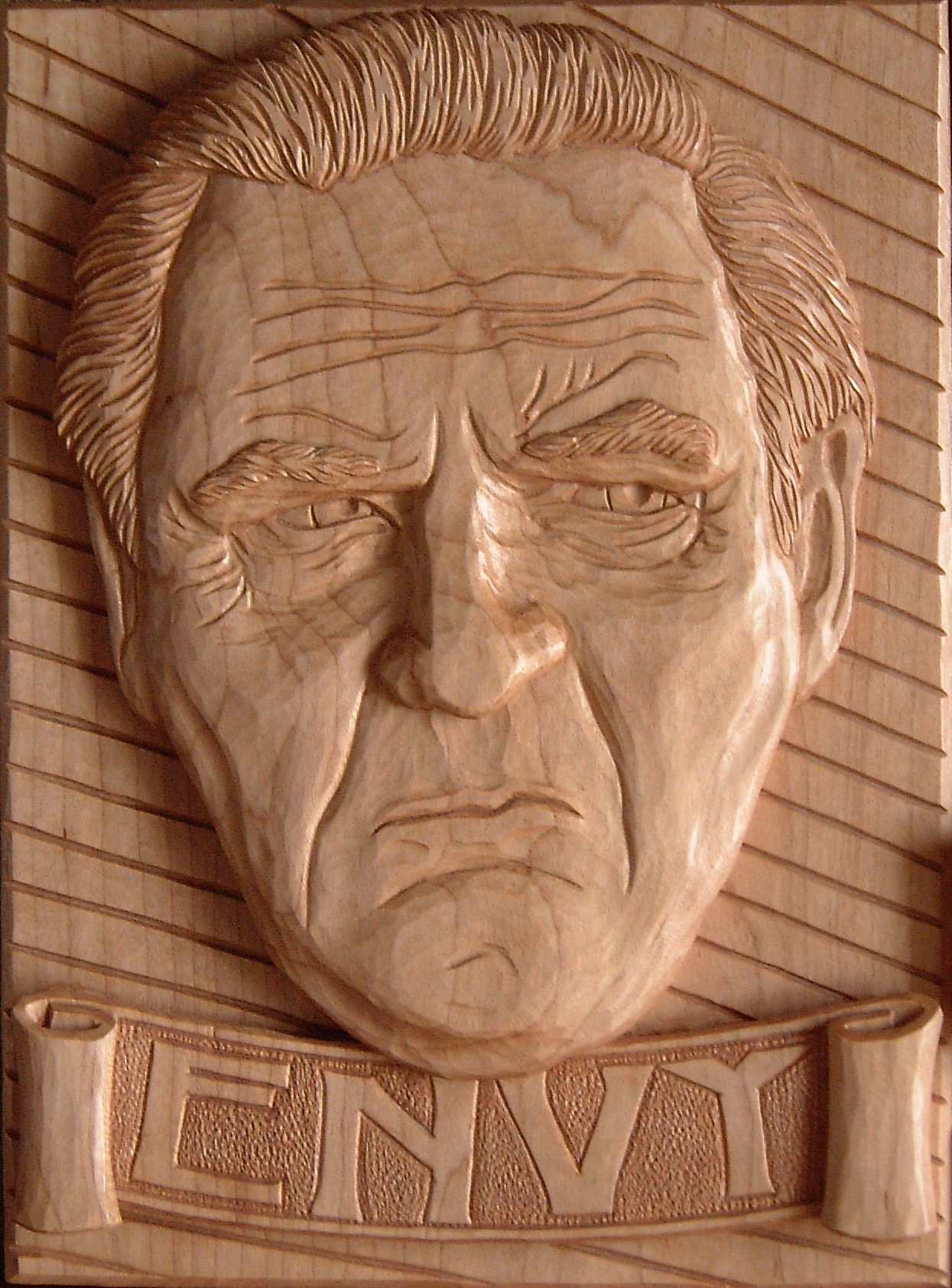


In the fall of 2003, I embarked on a journey to portray the classic Seven Deadly Sins in the medium of relief wood carving. This is a classical theme in medieval European carving, useful in teaching the basic tenants of sin, the law, God's forgiveness and grace.
The idea of "sin" has fallen into disrepute, especially outside the Christian Church, but to some extent, within as well. The Biblical witness to sin has not changed in spite of current prevailing opinion. It warns us that sin is just as real, just as destructive, just as potent and every bit as seductive as it ever was. The early church compiled a list of the deadliest of the sins humans fall prey to. It consisted of Pride, Lust, Envy, Greed, Anger, Gluttony and Sloth. These were thought to be the root of every sin committed.
This project is an attempt to present the idea of sin in a fresh way for those who might not have seriously considered the concept before, but also for those who might have discarded what they were taught in the past. It has been said that "We are not sinners because we sin; we sin because we are sinners". The distinction is critical. The former statement is based on the premise that we can free ourselves from sin, with effort and self discipline. The latter statement claims that we are born sinners, and cannot free ourselves.
The carvings that make up this collection began as digital images. A number of carving students agreed to pose for the pictures. Some posed for each of the "sins" while others posed for a specific "sin". The pictures, shown below, were processed on a Macintosh computer, using a graphics program that allowed me to reduce the photos to gray scale images, suitable for tracing on a light table.
A master pattern sheet for each carving was assembled on ledger-sized pieces of paper. Onto that master sheet I drew the components of the pattern, such as perimeter lines and the text ribbon. Pencil tracings of each of the gray-scale photos were made and then scanned into the computer and scaled to the size appropriate for the various master pattern sheets. The scaled drawings were then traced onto the master pattern sheets, employing a light table to make things easier.
Below are the seven patterns ready for transferring to the hard maple panels, along with the seven finished portraits.
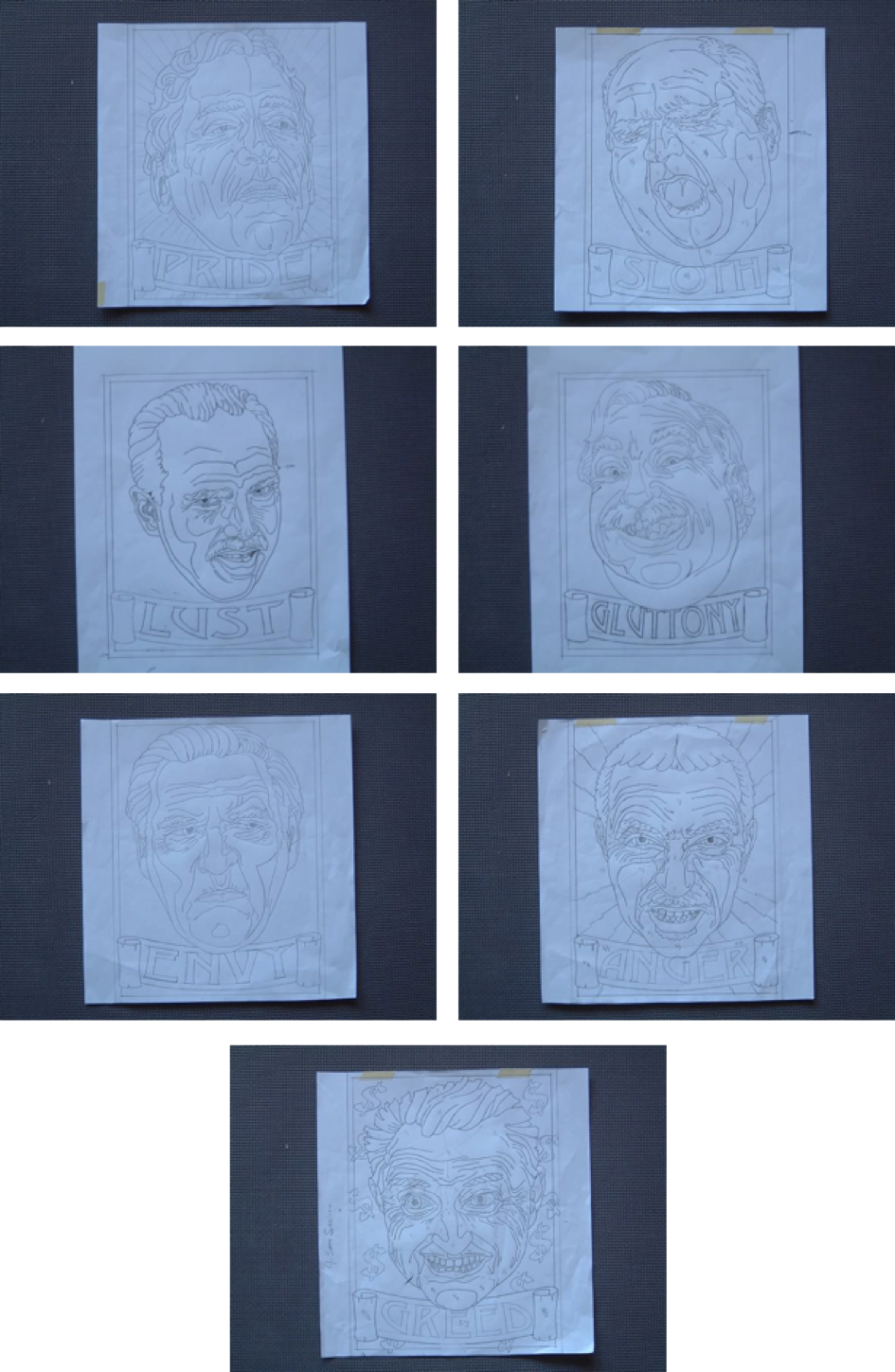
Woodcarvings by W.F. Judt